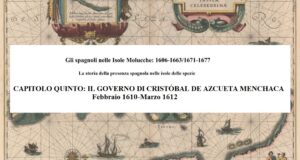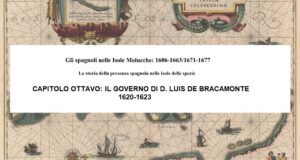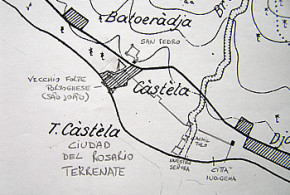Written by : Fransisco Soarez Pati, S.H
Email: fransisco78@gmail.com
O Arbiru is the name of a Portuguese flagged cargo ship with a deadweight of 400 tons. In the 1973 period when the Timor Leste was still an Overseas Province (Ultramarinas Provincia) under the rule of the Portuguese colonial government, this overseas province was led by a Governor named Fernando Alves Aldeia. It can be said that the O Arbiru ship is the most important means of sea transportation for the Portuguese Government because with it the Portuguese Government in Lisbon can meet the basic needs of the people of the Overseas Province in Dili and its surroundings via Bangkok and onwards using this sea transportation mode to Dili.
It was Friday 18 May 1973, the Government of the Province of Overseas of Timor Portuguese and the people of Timor Portuguese were supposed to celebrate it as “Portugal Day”. A number of activities such as receptions, sports competitions, exhibitions, night markets which were commonly held in previous years were canceled by the Governor. Instead of the Governor of Timor Portuguese declaring the day a day of mourning, local residents were asked to fly the flag at half mast for the whole day.
As narrated by Eliza Meskers Tomodok, Head of the Indonesian Representative Office in Dili, Portuguese Timor (1972-1976), in his book Catatan Hari-Hari Akhir Timor Portugis which means Notes on the Last Days of Timor Portuguese, he describes that on April 28, 1973, the ship O Arbiru left the Port of Dili for Bangkok and pass the northern route of the Alor archipelago to the west along the Flores sea. According to the voyage plan, the ship will go to Bangkok Harbor to transport 3,000 tons of rice which was sent from Lisbon for the people of Portuguese Timor. According to the voyage plan, the ship O Arbiru was scheduled to arrive in Bangkok on May 7, 1973. However, since April 29, 1973, radio communication and navigation between Dili and the captain of the ship O Arbiru were completely cut off.
Participating in the voyage were the wife and child of the Portuguese Navy Commander in Timor and 16 other passengers including the ship’s crew. At first the naval commander in Dili suspected that the disconnect between Dili and the captain might have been caused by a faulty radio communication. However, because there was no communication at all, the naval commander in Dili asked the embassy in Bangkok whether the ship had arrived in Bangkok as scheduled or not. The answer was that the ship had not yet arrived in Bangkok. Since then, on May 11, 1973, the naval commander took the issue of the loss of contact with the O Arbiru ship seriously and continued to seek information on the ship’s position.
At first the search was carried out using the T.A.T aircraft which on May 12, 1973 flew following the O Arbiru shipping route to find traces of the ship. That day there was no sign of any trace of the ship’s voyage, so the pilot of the T.A.T aircraft decided to spend the night in Denpasar, Bali. On the next day, May 13, 1973, another search was carried out along the sea waters of Bali, Lombok, Sumbawa, Flores, Alor but there were no sign from the search.
The commander of the Timor Portuguese Navy then requested assistance from the Indonesian Naval Headquarters in Jakarta, reporting the incident to Portuguese representatives in Jakarta, Bangkok, Manila, Singapore and Kuala Lumpur. Meanwhile, the issue that spread among the people of Dili at that time was that the O Arbiru ship was “sabotaged” by Indonesian sailors. “I don’t know how the Portuguese Timor government will react to such issues, but I wouldn’t be surprised if someone was taken in by the issue. Moreover, among the passengers on the ship were the wife and children of the Portuguese Timor Navy Commander himself,” wrote E.M Tomodok in his book Notes on the Last Days of Timor Portuguese.
The wife and son of the Timor Portuguese naval commander were also invited by the captain of the ship. At the first the captain of the ship invited the Governor’s wife, Mrs. Aldeia, but because she was unable to do so, she asked the wife of the naval commander to take her place. The wife of the Timor Portuguese Navy Commander was actually half hearted to replace Mrs. Aldeia was on the voyage but because of her husband’s insistence, she went with her child. There was also the wife of an army major, the wife of the captain of the ship and the wife of the director of a bank in Dili.
On 16 May 1973, the Commander of the Timor Portuguese Navy met the Head of the Indonesian Representative in Dili who requested the Indonesian consulate for assistance. Without wasting time then the Head of the Indonesian Representative in Dili directly contacted the Ministry of Foreign Affairs and the Ministry of Transportation in Jakarta and the Governor of East Nusa Tenggara in Kupang. The next day, May 17, 1973, was the first day of the attempted telephone communication between Dili and Kupang. The Head of Indonesia’s Representative Office in Dili asked one of his staff named Saat to speak with the East Nusa Tenggara Governor’s Office in Kupang.
On the other end of the phone call from the Governor’s office, the recipient of the call explained that the ship sank in the Flores Sea on April 29, 1973 at 09.00 Central Indonesian Time. One of the crew members has been rescued and is in Maumere, Flores for help. Hearing this explanation, the Head of the Indonesian Representative in Dili then submitted a report to the Head of T.A.T, de Castro who led the search for the ship. After that the Head of Indonesian Representative together with the Portuguese Timor delegation left for Kupang and continued their journey to the city of Maumere, Flores. Arriving in Maumere they were received by local officials with great sympathy.
The Commander of the 1708 Sikka Police Resort, David Lameng, in his official written statement, said that on Sunday, 29 April 1973, at 09.00, the ship O Arbiru was hit by a storm between Sukun Island (Sikka Regency) and Kalatoa Island (Selayar Regency) in Flores waters. The ship’s engineer, Paulo de Rosario was adrift in the sea for 8 days until finally he was rescued by the “Harapan Baru (New Life)” boat. He was then taken by fishermen to the Maumere city for help and accommodated in Maumere Harbor until he was handed over to the Timor Portuguese representative who was present in Maumere. There is no sign that the other passengers on the ship survived. The handover process was then carried out in the city of Maumere and after that the representatives of Timor Portuguese returned to Dili with Paulo de Rosario, the only engineer who survived.
Meanwhile in Dili, Ramos Horta, who at that time worked for the media A Voz de Timor (Voice of Timor or Suara Timor) carried a lengthy news story that created an unfavorable impression of Indonesia’s role. To avoid misunderstanding, the Head of Indonesian Representative then invited Ramos Horta from A Voz de Timor to the consulate office to be asked for an explanation as to why the news of condolences from the Indonesian government was not published and why only condolences from the Taiwan Consulate were published in the media. Ramos Horta then replied that it was the editor in chief who determined it. Not satisfied with Horta’s answer, the Head of the Indonesian Representative Office then delivered a letter to the media leader A Voz de Timor with a request to be published in the media. The editor-in-chief of A Voz de Timor, Lieutenant Gomez is none other than the Secretary to the Governor of Portuguese Timor. The Governor of Portuguese Timor, through his secretary, Lieutenant Gomez, later acknowledged the misunderstanding and apologized to the Indonesian representative in Dili. The Governor of Timor Portuguese then made a special bulletin about the assistance provided by all parties, including Indonesia. According to the explanation of the Governor of Timor Portuguese, the mistake lies with him and it was difficult to explain why he made a mistake. Hearing this explanation, the Head of the Indonesian Representative Office took wise steps so as not to cause conflict in the community, he accepted the apology from the Governor of Timor Portuguese and the open letter he had prepared agreed not to be announced.
The wreck of the O Arbiru ship is still in the waters of the Flores sea not far from the town of Maumere or 32 nautical miles from the island of Pemana. The people of the city of Maumere and the northern coast of Flores Island call the wreck as the Takalayar Ship. A fisherman from Pemana Island named Herman alias Almani narrate that “We at Pemana Island knew the ship was a Hong Kong ship because there was Chinese writing on the body of the ship. Some people say it was a Portuguese ship. We call the ship by the name of the ship Takalayar. I remember the ship sank in 1973 when I was 15 years old. When it sank, all the goods on the ship were taken by the people of Maumere, Pemana, Selayar and surrounding areas. For years the shipwreck became a fish house, where we caught red snapper,” said Herman alias Almani to the author. This is the story of the sinking of the ship O Arbiru or Takalayar, the most important mode of sea transportation for the Timor Portuguese colonial government at that time.
Bibliography:
- Catatan Hari-Hari Akhir Timor Portugis, E. M Tomodok, Cetakan I, Pustaka Jaya,1994
- Interview with local fisherman.
 Colonial Voyage The website dedicated to the Colonial History
Colonial Voyage The website dedicated to the Colonial History






















































































